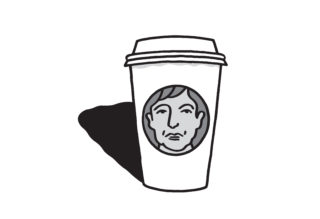The digital music war is over – coffee is just coffee again
It was much more fun when the music industry had no idea how to use the Internet

It was much more fun when the music industry had no idea how to use the Internet
In March 1998 a company no one had heard of released a product no one wanted to buy. The MPMan, created by SaeHan Information Systems, was a small box that weighed about 100 grams. It was impressively ugly and had a user interface that only a fan of cryptic crosswords could love. However, it did one thing that no other portable product could: it played MP3s.
In June 2018 an artist everyone had heard of released an album everyone (so it seemed) wanted to listen to. Drake’s ‘Scorpion’ has since been played about a billion times, with millions added to that figure everyday. Better yet for the Canadian mumble master, streaming’s two biggest hitters, Spotify and Apple, fought over who got to kiss his bits.
These two dates mark the start and end of a 20-year digital transition, one that sent the music industry reeling like a 13-year-old taking his first hit of poppers. Like most revolutions it began with grand ideas, but – after a lot of violence, chaos and confusion – ended up with the same bosses back in the big chairs.
While the MPMan might have been a first, it didn’t start the revolution on its own. Yes, it could play MP3s – a compressed audio format whose origins date back to the 1980s – but since you couldn’t really buy MP3s anywhere the MPMan was about as much use as a condom in solitary confinement. And that’s where Napster came in.
Launched in 1999, Napster made it possible for people to share their digitised music collections with anyone, anywhere. Suddenly pube-sprouting spods like me – whose total album archive consisted of ‘The Band Who’ by Travis and ‘Onka’s Big Moka’ by Toploader – suddenly had access to the entire back catalogues of actually good bands (although I must confess I mostly used it to download more crap music).
At first the record industry didn’t give a shit, but suddenly Napster had 80 million users and other imitation services were popping up faster than bad tattoos on a footballer. Metallica, Dr Dre and other money lovin’ rich people quickly killed Napster, but this was rather like putting you thumb up your bum after you’ve already farted: too little, too late.
This wasn’t the first time the music biz brains had gone berserk. When recorded music was first retailed at the start of the 20th century, concert hall owners thought it would ruin them, while the ‘Home Taping Is Killing Music’ campaign of the ’80s was based on the same fear. But this digital stuff was a far greater dilemma, because it suddenly looked like consumers didn’t need the industry at all.
What followed was the age we’ve just lived through, where those who wanted to make music free fought it out with those who wanted to make sure it was monetised. The solution would lie somewhere between the two, but where – and what would it look like? Experimentation – some of it interesting, some of it idiotic – followed.
Some artists nobly went along with the whole ‘keep it free’ thing. These libertarian lawbreakers included some you’d expect (Chuck D, for example) but also some you wouldn’t, like Billy Corgan, whose ‘Teargarden by Kaleidyscope’ project from 2009 was entirely free for fans (which to non-fans of Corgan still seems expensive). U2 famously forced their ‘Songs of Innocence’ onto all iPhones, thus proving that the new digital age had not dampened Bono’s ability to be a massive nob.
Then there was the ‘pay what you want’ pack. Inspired by a business model usually restricted to vegan restaurants, the most notable example was Radiohead’s ‘In Rainbows’. The surprise digital release – made possible by the fact the band had completed its contract with EMI – ended up earning more than any of their other albums. It was later sold as a regular CD in shops, which sort of undermined the magic a bit.
Others decided to deliver their music in tandem with existing commodities. Prince’s ‘Planet Earth’ came free with The Mail on Sunday, an odd choice given their long-held views on race and sexual liberation. Paul McCartney, meanwhile, made one of his classic embarrassing dad decisions by signing with Starbucks, where his album was sold alongside other slightly stale products. Some went further still and effectively had their albums sponsored, as Rihanna did when Samsung stuck its cash behind ‘Anti’.
But while artists were busy coming up with sexy solutions, the invisible hand of the market had other ideas. File sharing servers were shut down, replaced by streaming services. Some of these worked pretty well; others – like Tidal and Pono – were not so hot. What they all had in common was that musicians could not make much money out of them, unless they were already famous.
The same went for record labels. Indies struggled, with Spotify sued for failing to pay royalties, while large labels did just fine: Sony and Universal both posted record profits in 2017. What started out as an easy way to share music with the MPMan has come full circle with the corporate colossus that is Drake and his conventional release campaign.
MP3s and easy sharing broke a hole in the dam and we were flooded with free music and interesting ideas about how and why we commodify art. Now, though, the big boys have poured a blob of concrete over everything and are back in control. It was a fun ride though, right?